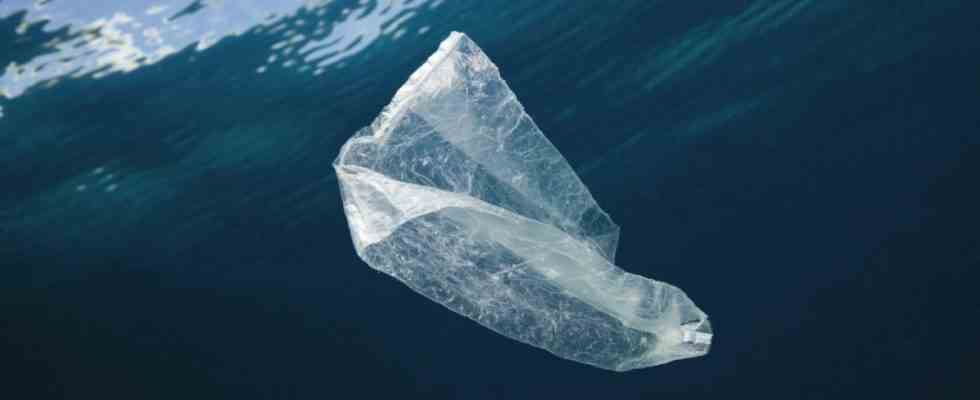Paper straws, single-use plastic bags banned from the supermarket, coffee in the canteen only in your own thermos mug: it feels like something is being done, at least in Germany, to reduce the amount of plastic waste. But the flood of plastic is steadily increasing worldwide. Swimming alone on the surface of the seas according to a recent study now 170 trillion pieces of plastic.
The authors of the study in the science journal Plos One evaluated data on plastic waste floating in the sea that other research groups had collected at a total of 11,777 locations between 1979 and 2019. The researchers write that plastic pollution of the world’s oceans has reached an “unprecedented level”.
Accordingly, the littering of the oceans with plastic particles has increased sharply since 2005. From 1979 to 1990 there was therefore no significant increase in the concentration of plastic in the seas, in the period between 1990 and 2005 the plastic pollution fluctuated with spikes up and down, but remained constant overall. The researchers attribute the strong increase since 2005 primarily to the increased production of plastic products, which continues to grow exponentially. Efforts to avoid and recycle plastic were negligible in comparison.
Seabirds feed their chicks with bottle caps
According to the German Nature Conservation Union, around 80 percent of plastic waste ends up in the oceans via rivers. Plastic bags, PET bottles, lighters, cigarette butts, but also disposable razors are floating around there. 20 percent of plastic waste ends up directly in the sea: often it is buoys or lost equipment from ships or oil and gas platforms. Also a big problem are ghost nets: old fishing nets that float in the ocean and in which sea turtles, whales and dolphins get caught and then miserably drown because they can no longer come up for air.
But smaller plastic particles also have devastating effects on sea creatures. Many animals mistake them for food; Biologists keep observing seabirds even feeding their chicks with sealing caps. According to the environmental organization WWF, plastic parts in the sea take on an odor that many birds mistake for the smell of food. If they eat too much plastic, the animals develop fatal constipation or starve with plastic-filled bellies. Leatherback turtles also mistake plastic bags floating in the water for jellyfish, their favorite meal. Whales are also often found with stomachs filled with plastic.
The effects of microplastics in the sea have not yet been researched well: tiny particles that are no longer visible to the naked eye and are formed when larger parts are decomposed, among other things. “Microplastics are ingested by the plankton, which in turn is eaten by many other animals,” says Heike Vesper, marine conservation expert at the WWF. “The microplastics are deposited in the body tissue of marine organisms and accumulate in the food chain.” Pollutants also attach themselves to the tiny particles, so the concentration of harmful substances in the bodies of marine animals also increases. They can also enter the human body through the consumption of contaminated fish.

